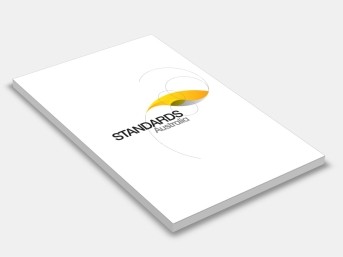AS/NZS 3003:2018 Electrical installations - Patient areas
Standards Australia/Standards New Zealand
Supersedes: AS/NZS 3003:2011 Electrical installations - Patient areas
Supersedes: AS/NZS 3003:2011 Amd 1:2015 Electrical installations - Patient areas
Draft Designation: DR AS/NZS 3003:2016Amended by: AS/NZS 3003:2018 Amd 1:2019 Electrical installations - Patient areas
The objective of this Standard is to specify particular requirements for electrical installations in patient areas. These requirements are additional to those specified in AS/NZS 3000 and the New Zealand Electricity (Safety) Regulations 2010.
This Standard may be applied through legislative requirements. This Standard supersedes AS/NZS 3003:2011 from its date of publication. This may not be practicable in some cases, and a transition period, e.g. 6 months, may need to be arranged. For example, where work on an installation was commenced before publication of this edition, the relevant regulatory authority or electricity distributor should be consulted regarding permission for the installation to be completed in accordance with AS/NZS 3003:2011.
Conformance with this Standard is deemed to be in accordance with AS/NZS 3003:2011.
New Zealand has formally consulted on the adoption of IEC 60364-7-710 and determined that the continued use of AS/NZS 3003 is the appropriate option for New Zealand.
NOTE: Refer to Report to Energy Safety, Ministry of Economic Development on New Zealand Electro-medical Area Regulation—Future options—From Standards New Zealand.
Any requirements that may be applicable only in Australia or New Zealand are indicated by the symbol or in the margin.
It is recommended that the responsible organization/entity carefully evaluate the procedures undertaken within existing installations and take steps to implement the appropriate electrical safety requirements specified in this Standard for areas that are used for cardiac-type procedures, or for procedures involving the regular use of medical electrical equipment.
Major changes in this edition include the following:
The decisions made by the responsible organization/entity in determining patient areas need to be based on the classification of the medical procedures undertaken in each area.
The word ‘point’ has been defined.
The term ‘Responsible organization/entity’ has been defined.
The term ‘electrical equipment’ has replaced the term ‘appliance’.
The word ‘identification’ has replaced the word ‘marking’.
The word ‘confirm’ has replaced the words ‘verified’ and ‘checked’.
The term ‘testing and verification’ has replaced the term ‘testing and commissioning’.
Exceptions have been included throughout this Standard.
The responsible organization/entity is required to provide documentation outlining patient area locations and classifications.
Patient area boundaries have been clarified in Figure 4.
The patient areas, as determined by the responsible organization/entity, in any facility, building, institution or medical practice not wired as cardiac-protected electrical areas are required to be wired as body-protected electrical areas.
Separation of circuits in cardiac-protected electrical areas has been clarified.
A clause on extra-low-voltage charging sockets (including USB) has been added, see Clause 2.4.3.1.2.
The distance required for socket-outlets within the entrance to a body-protected electrical area has been reduced to 2.0 m.
Access to RCD controls and indicators is clarified in Table 2.1.
Additional requirements have been included for socket-outlet labelling.
Additional requirements have been included for socket-outlets requiring isolation switches.
Additional requirements have been included for identification of socket-outlets protected by LPDs.
Equipotential earthing terminals have been clarified.
Equipotential earthing system requirements for nodes connected to the EP junction are now reflected in Figure 8.
EP test terminals have been clarified.
EP conductor labelling has been clarified.
Where fixed electrical equipment rated at or above 2.0 kW is to be installed in a body-protected or cardiac-protected electrical area, the entire patient area is required to conform with this Standard.
A clause on disability and aged care has been added, see Clause 5.3.
A clause on reclassification of existing cardiac-protected electrical areas as body-protected electrical areas has been added, see Clause 6.2.5.3.
Repairs within patient areas not wired as cardiac-protected or body-protected electrical areas in most cases will trigger upgrading to be in accordance with this Standard.
An identification clause on alterations and additions within a patient area has been added, see Clause 6.2.5.
Section 7 is now ‘Identification of patient areas’.
Section 8 is now ‘Routine inspection and testing of cardiac and body-protected electrical areas’.
Provisions for magnetic fields are now informative and located in Appendix H.
Revised guidance tables have been included to illustrate requirements.
The terms ‘normative’ and ‘informative’ are used in this Standard to define the application of the appendix to which they apply. A ‘normative’ appendix is an integral part of the Standard whereas an ‘informative’ appendix is only for information and guidance.
Originated in Australia as part of AS 3003-1976. Originated in New Zealand as AS/NZS 3003:1999. Previous edition 2011. Sixth edition 2018. Reissued incorporating Amendment No. 1 (July 2019).Contents:
Section 1: Scope And General
Section 2: General Requirements For Body-Protected And Cardiac-Protected Electrical Areas
Section 3: Additional Requirements For Body-Protected Electrical Areas
Section 4: Additional Requirements For Cardiac-Protected Electrical Areas
Section 5: Special Patient Areas
Section 6: Alterations And Repairs To Electrical Installations In Patient Areas
Section 7:: Identification Of Patient Areas
Section 8: Routine Inspection And Testing Of Cardiac-Protected And Body-Protected Electrical Areas
Appendices A: Planning Of Areas And Selecting The Right Type Of Lpd
Appendix B: Commissioning Inspection Checklist
Appendix C: Statement Of Conformity Recording Form
Appendix D: Calculations For Equipotential Earthing
Appendix E: Routine Inspection Checklist For Body-Protected Electrical Areas
Appendix F: Routine Inspection Checklist For Cardiac-Protected Electrical Areas
Appendix G: Magnetic Fields
Wiring of Medical Treatment Areas in Hospitals.
Aged and Community Services Australia; Australian Healthcare and Hospitals Association; Australian Industry Group; Biomedical Engineering Advisory Group SA; Canterbury District Health Board; Construction Services Branch, ACT Government; Consumers Federation of Australia; Day Hospitals Australia; Electrical Regulatory Authorities Council; Engineers Australia; Institute of Electrical Inspectors; Institute of Healthcare Engineering Australia; Institution of Professional Engineers New Zealand; National Electrical and Communications Association; New Zealand Institute of Health and Engineering; NSW Health; Waitemata District Health Board; Worksafe New Zealand.
